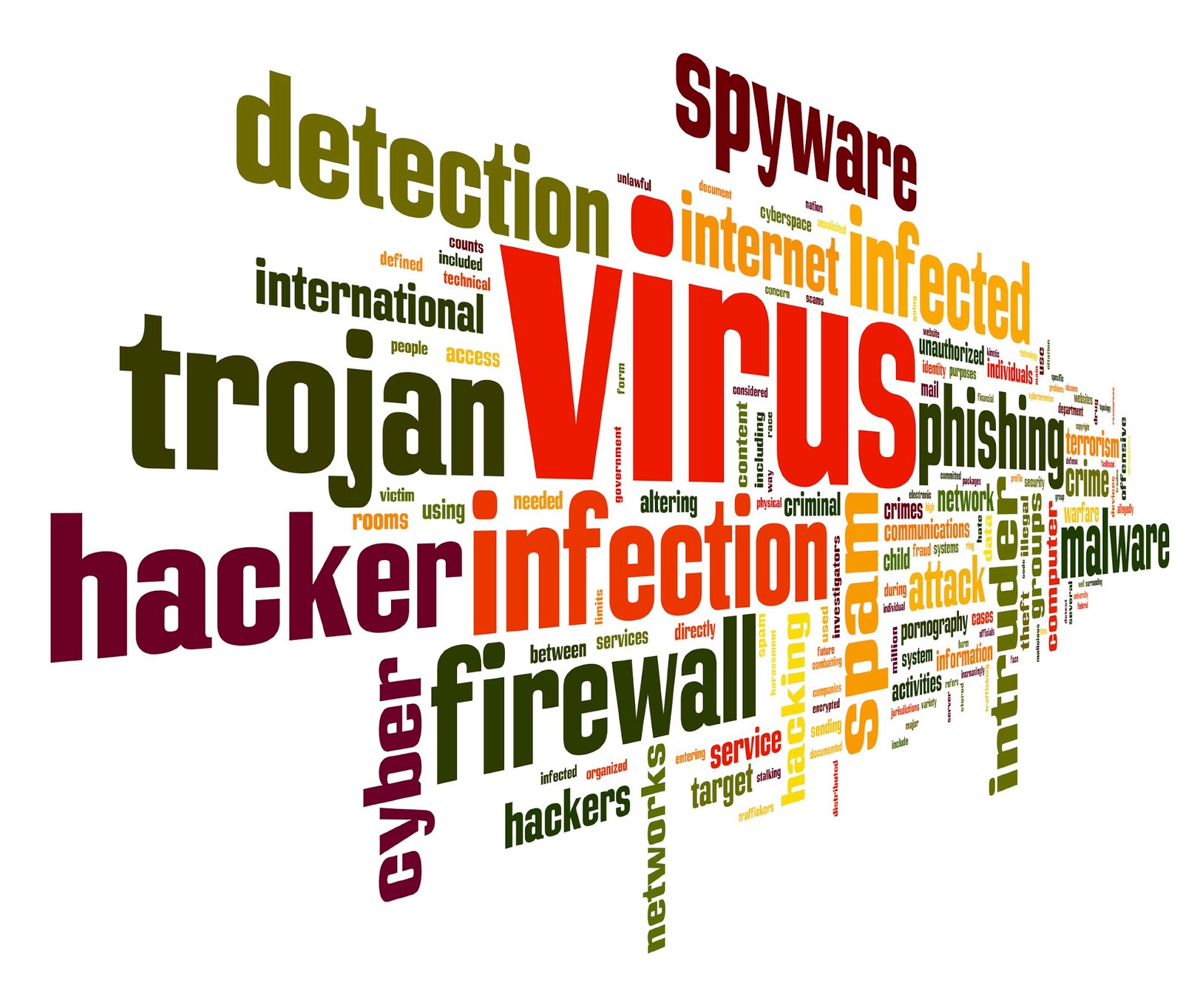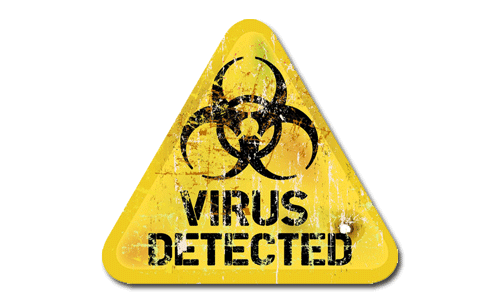Back to: COMPUTER SCIENCE JSS3
Welcome to JSS3 Third Term!
We are eager to have you join us in class!!
In today’s class, We will be discussing Computer Virus. We hope you enjoy the class!
TOPIC: COMPUTER VIRUS

What is a Computer Virus?
Computer viruses are small software programs that are designed to spread from one computer to another and to interfere with computer operation. A virus might corrupt or delete data on your computer, use your e-mail program to spread itself to other computers, or even erase everything on your hard disk.
Computer viruses are often spread by attachments in e-mail messages or instant messaging messages. That is why it is essential that you never open e-mail attachments unless you know who it’s from and you are expecting it.
A computer virus is a malware program that, when executed, replicates by inserting copies of itself (possibly modified) into other computer programs, data files, or the boot sector of the hard drive; when this replication succeeds, the affected areas are then said to be “infected”.
A computer virus is a program or piece of code that is loaded onto your computer without your knowledge and runs against your wishes. Viruses can also replicate themselves. All computer viruses are man-made. A simple virus that can make a copy of itself over and over again is relatively easy to produce. Even such a simple virus is dangerous because it will quickly use all available memory and bring the system to a halt. An even more dangerous type of virus is one capable of transmitting itself across networks and bypassing security systems.
Viruses often perform some type of harmful activity on infected hosts, such as stealing hard disk space or CPU time, accessing private information, corrupting data, displaying political or humorous messages on the user’s screen, spamming their contacts, logging their keystrokes, or even rendering the computer useless.
Viruses can be disguised as attachments of funny images, greeting cards, or audio and video files. Computer viruses also spread through downloads on the Internet. They can be hidden in illicit software or other files or programs you might download.
Types of Viruses
There are different types of viruses:
- Boot Sector Virus – targets the boot sector of a hard drive and crucially affects the boot process. Boot sector viruses became popular because of the use of floppy disks to boot a computer. The widespread usage of the Internet and the death of the floppy has made other means of virus transmission more effective.
- File Infection Virus – coded viruses that attach themselves to .exe files; compressed files such as zip or drive files.
- Multipartite Virus – cross between a file virus and a boot sector virus. These type of viruses spread in many different ways. Their actions vary depending on the OS installed and the presence of certain files. They tend to hide in the computer’s memory but do not infect the hard disk.
- Network Virus – uniquely created to quickly spread throughout the local area network and generally across the Internet as well. Typically moves within shared resources like drives and folders.
- Macro Virus – infects program files that use macros in the program itself, such as word processors. These viruses infect the files created using some applications or programs that contain macros such as doc, ppt, Xls and MDB. They automatically infect the files with macros and also templates and documents that are contained in the file. They hide in documents shared through e-mail and networks. Macro viruses include:
- Relax
- bablas
- Melissa.A
- 097M/Y2K
- E-mail Virus – generally this is a macro virus which multiplies by sending itself to other contacts in your address book, in hopes they’ll activate the virus as well. This is a virus spread via an email. Such a virus will hide in an email and when the recipient opens the mail.
- Memory Resident Viruses – They usually fix themselves inside the computer memory. They get activated every time the OS runs and end up infecting other opened files. They hide in RAM. This type of virus is permanent such that it dwells in the RAM memory. From there it can overcome and interrupt all of the operations executed by the system: corrupting files and programs that are opened, closed, copied, renamed etc. Memory Resident Viruses Include:
- CMJ
- meve
- randex
- mrklunky
- Worm: This program is very similar to a virus and has the ability to self-replicate leading to negative effects on your computer. Worm Viruses Include:
- lovgate.F
- sobig.D
- trile. C
- PSWBugbear.B
- Mapson
- Trojans or Trojan Horses: Another unsavoury breed of malicious code (not a virus as well) are Trojans or Trojan horses, which unlike viruses do not reproduce by infecting other files, nor do they self-replicate like worms. Trojans can illegally trace important login details of users online. For example, E-Banking is very common among users, therefore, the vulnerability of tracing your login details whenever your PC is working without any strong powerful antivirus installed.
- Browser Hijacker: This virus can spread in many different ways including a voluntary download. If infects certain browser functions especially in the form of re-directing the user automatically to certain sites. A good example is the cool web search. This type of virus, which can spread itself in numerous ways including voluntary download, effectively hijacks certain browser functions, usually in the form of re-directing the user automatically to particular sites
- Polymorphic Virus: They encode or encrypt themselves in a different way every time they infect your computer. They use different encryption and algorithms. This makes it difficult for the antivirus software to locate them using signature or string searches (since they are very different in each encryption). Polymorphic Viruses Include:
- Marburg
- tuareg
- Satan bug
- elkern
- FAT Virus: The file allocation table or FAT is the part of a disk used to connect information and is a vital part of the normal functioning of the computer. This type of virus attack can be especially dangerous, by preventing access to certain sections of the disk where important files are stored. Damage caused can result in information losses from individual files or even entire directories.
- Overwrite Viruses: These types of viruses delete any information in a file they infect, leaving them partially or completely useless once they are infected. Once in the computer, they replace all the file content but the file size doesn’t change. Overwrite Viruses Include:
- Trj.Reboot
- way
- trivial.88.D
- Companion Viruses: Companion viruses can be considered file infector viruses like a resident or direct action types. They are known as companion viruses because once they get into the system they “accompany” the other files that already exist. In other words, in order to carry out their infection routines, companion viruses can wait in memory until a program is run (resident viruses) or act immediately by making copies of themselves (direct action viruses). Some examples include: Stator, Asimov.1539, and Terrax.1069
SELF EVALUATION
- What’s a computer virus?
- Highlight SIX types of virus?
We have come to the end of this class. We do hope you enjoyed the class?
Should you have any further question, feel free to ask in the comment section below and trust us to respond as soon as possible.
In our next class, we will be talking about the Sources of Virus. We are eager to meet you there.


Tanx
Pls explain the source of computer virus 😊😊😉😉
Scroll down you will see the stuff
I really appreciate what you guys have done. All I want to say is thank you to the person who created this page, keep it up …
Thanks for this note
Very educative